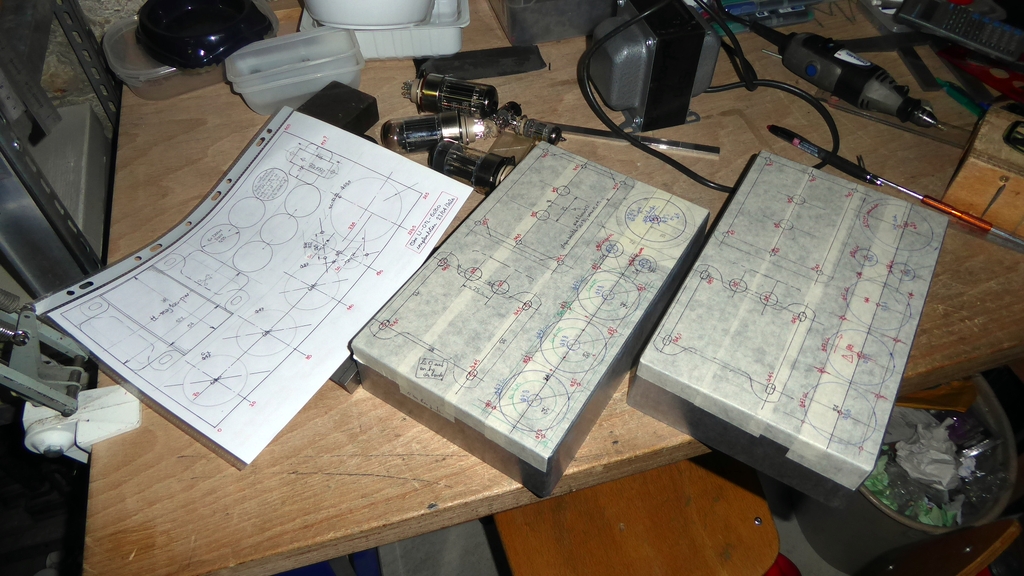Sorry for the delay 🙄!@Kay Pirinha : to which schematic do you refer ?
A+!
I was referring to the schematics in #60.
Best regards!
Sorry for the delay 🙄!
I was referring to the schematics in #60.
Best regards!
Ha ! Too late... 😛😛😛
Additional front and back face plates awaiting engraving :
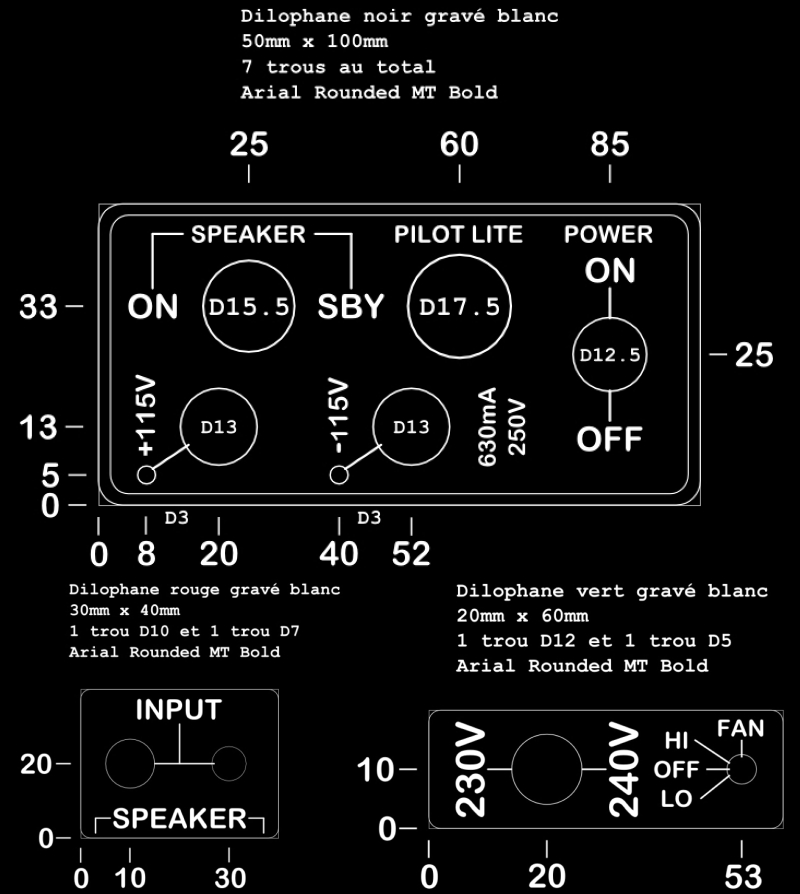
Wait and See...
A+!
Well, the final result is that the clipping at the output is symmetrical, and starts to be rounded (soft clipping) before reaching what is shown on the clipping pics.
It's a combined mix between input, Cathodyne and output stage clippings, showing the circuit reaches evenly its maximum possibilities, given its design simplicity and supply voltages available.
This Ultimate OTL 6080 amplifier will be built in two mono blocks, each in a 275x175x67mm Hammond aluminium die-cast chassis. So it will be a pair of compact OTL amps 😉... The same size and style as my Ultimate 300B below :
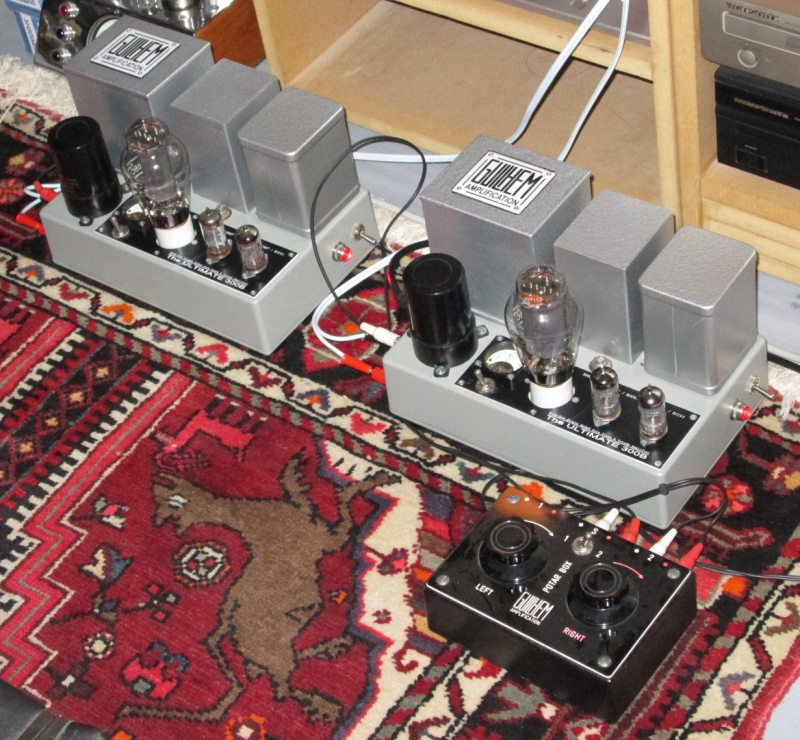
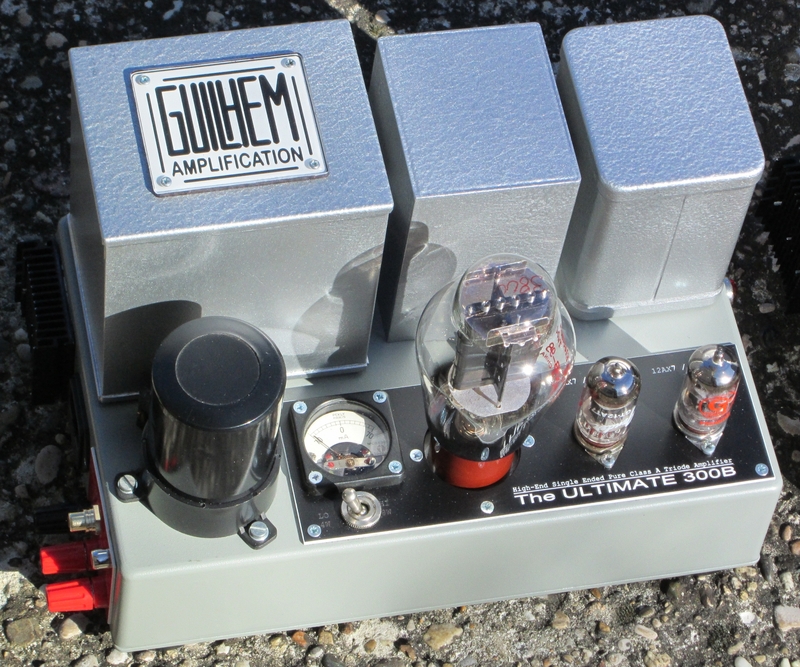
Orders are placed, so next step : building the units... It will take some time, I guess... 🙄
Wait and See !
A+!
Gorgeous!
For the moment, work is going on slowly... 😱
Cleaning and calibration check of the WWII General Electric mAmmeters :
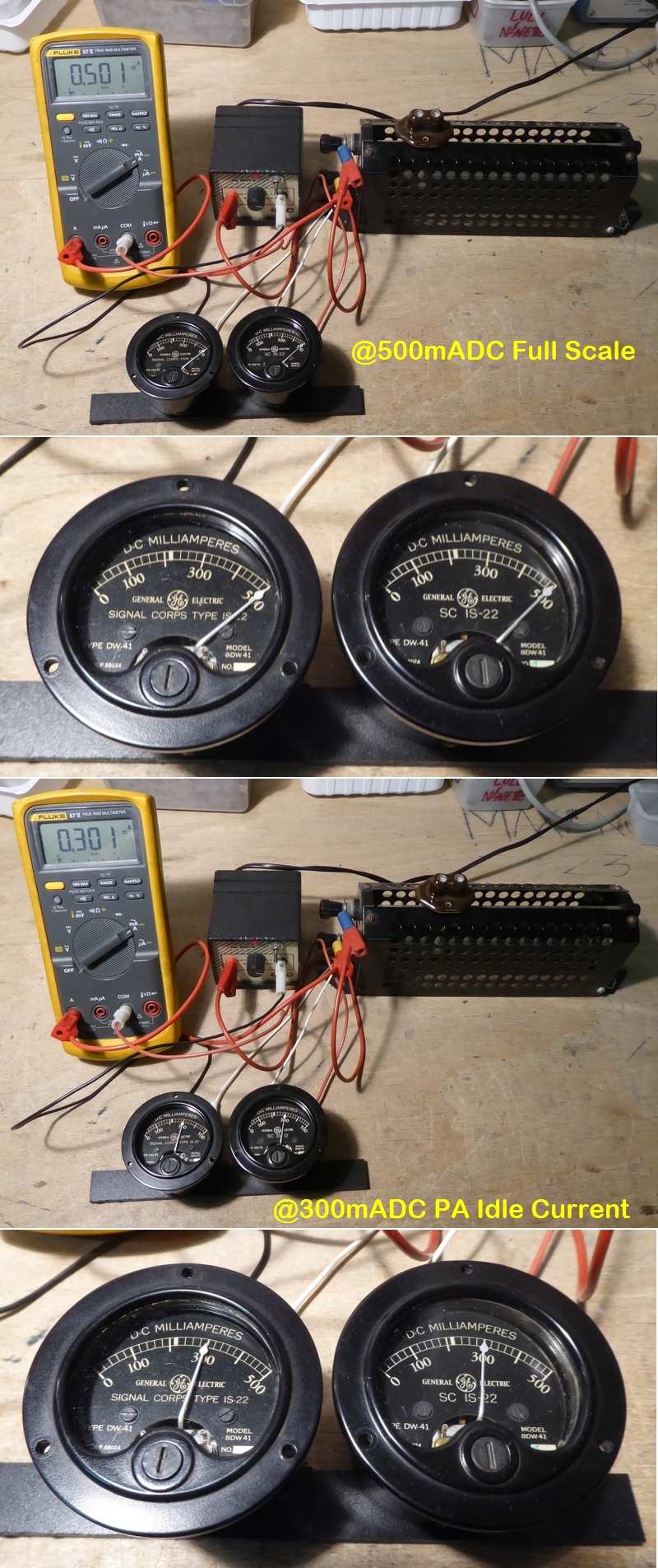
Wait and See... 😀
A+!
Cleaning and calibration check of the WWII General Electric mAmmeters :

Wait and See... 😀
A+!
those sure are pretty
Yep. Nice meters.
Thanks @gideon1990 and @Brice ! 🙂
AFAIR they come from WWII USAF bomber transmitters (these used 1xVT25 + 3xVT4C).
A+!
Lab-Retro-Cool look : Engine turning (Bouchonnage in French) of the chassis, before drilling :
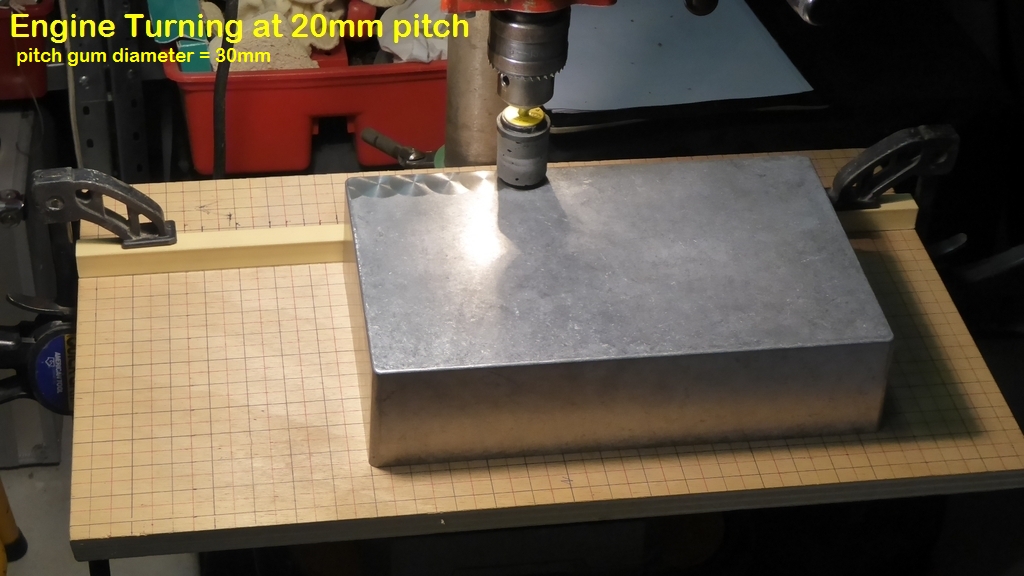
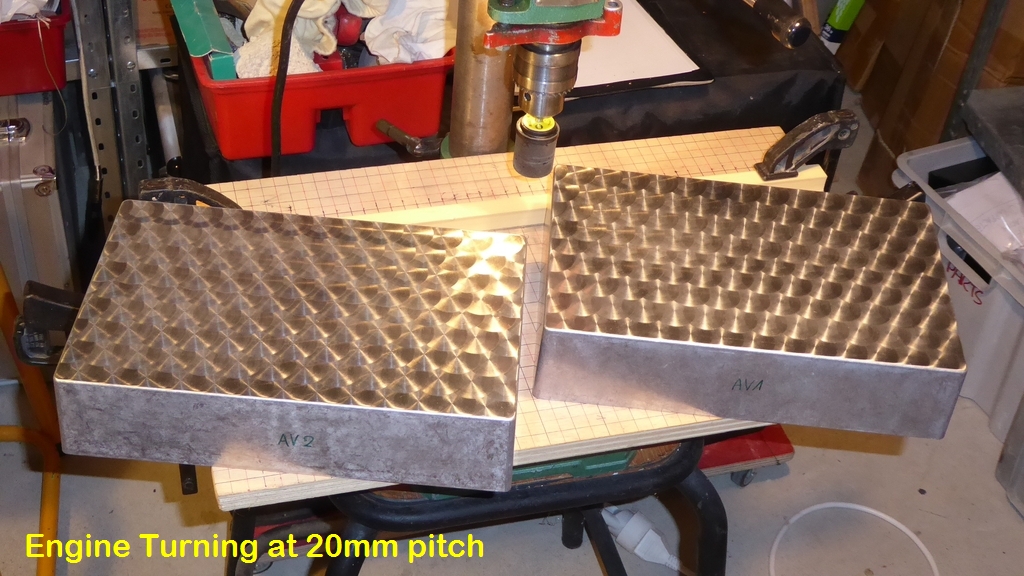
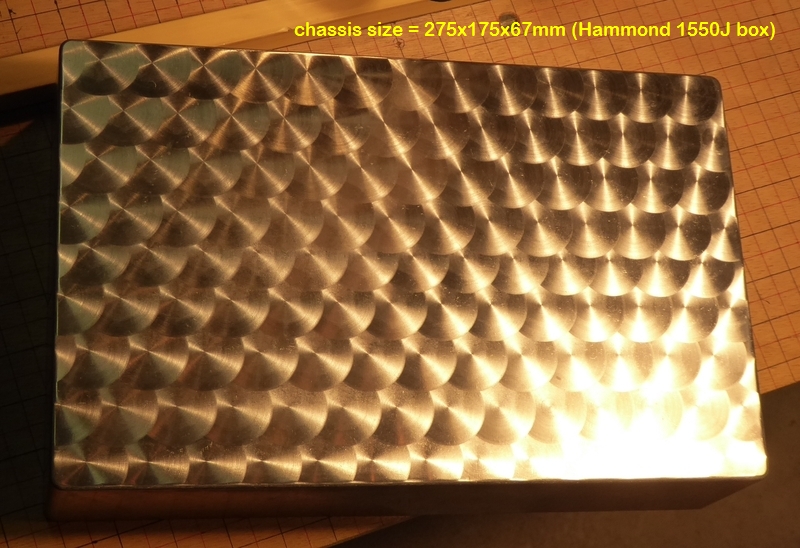
Wait and See... 😀
A+!



Wait and See... 😀
A+!
Thanks @Kay Pirinha and @gideon1990 ! 🙂
All the engraved plates are here now 😎 :
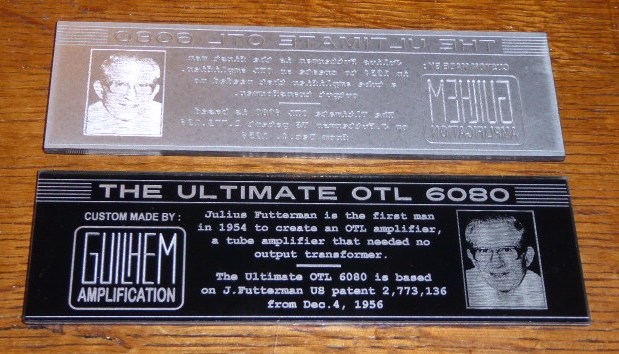
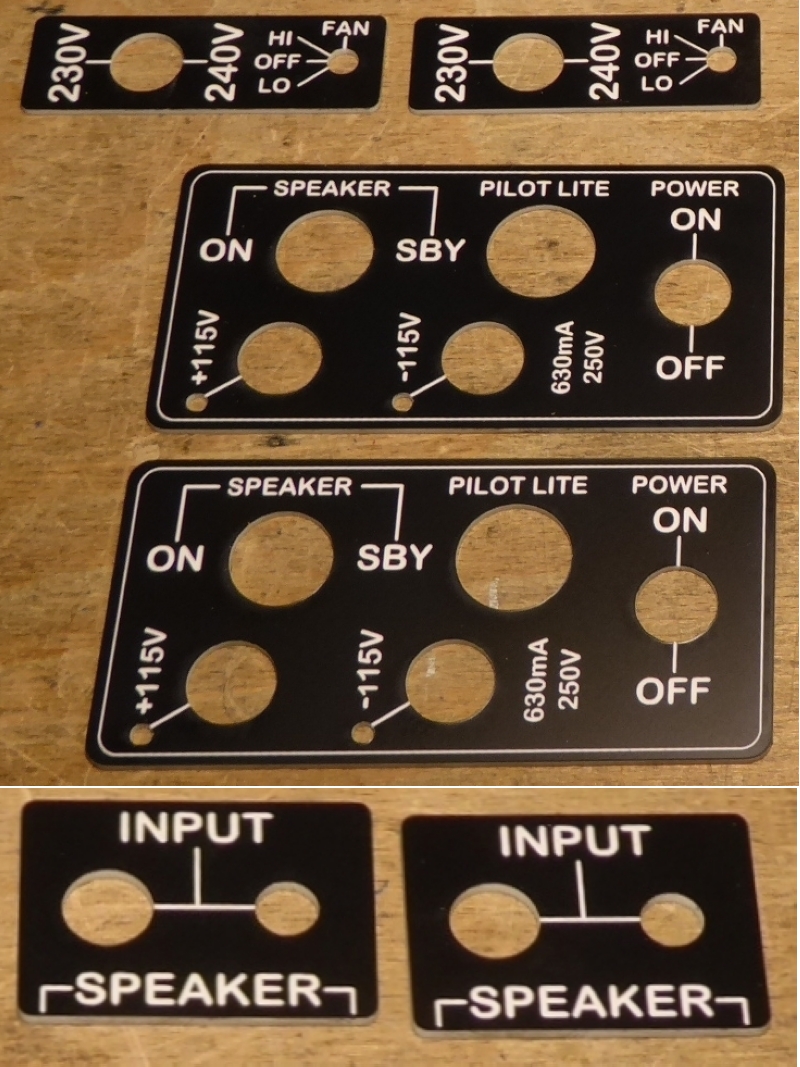
Tomorrow, I think I should be able to start the tracing and drilling of the chassis... 🙄
A+!
All the engraved plates are here now 😎 :


Tomorrow, I think I should be able to start the tracing and drilling of the chassis... 🙄
A+!
Seeing your engraved plates puts me in mind of a little searching a did a few years ago, into the origins of the OTL amplifier, and where Futterman fits in to the story. For these purposes, I would restrict the term OTL to mean an amplifier intended to drive low-impedance speakers (say 16 ohm or less), since there were certainly earlier "OTL amplifiers" for driving high impedance speakers (like 600 ohms or more), but those are not particularly remarkable.
In terms of published articles, there was one by Dickie and Macovski in June 1954 (in Audio magazine), for a 25W OTL using 6082 output tubes. Then later, in October 1954 there was an article (I think in the same magazine) by Futterman.
Futterman's patent US2773136 appeared dated December 4, 1956. But it was filed July 30, 1953.
I don't know of any prior claims for OTL amplifiers (driving low-impedance speakers). Maybe someone else does?
I wonder when Futterman actually built his first OTL amp? Had he actually built one when he filed his patent in July 1953, I wonder?
In any case, it seems to be a close run thing between Futterman and Dickie-Macovski.
In terms of published articles, there was one by Dickie and Macovski in June 1954 (in Audio magazine), for a 25W OTL using 6082 output tubes. Then later, in October 1954 there was an article (I think in the same magazine) by Futterman.
Futterman's patent US2773136 appeared dated December 4, 1956. But it was filed July 30, 1953.
I don't know of any prior claims for OTL amplifiers (driving low-impedance speakers). Maybe someone else does?
I wonder when Futterman actually built his first OTL amp? Had he actually built one when he filed his patent in July 1953, I wonder?
In any case, it seems to be a close run thing between Futterman and Dickie-Macovski.
Isn't this a completely transformerless amplifier that even didn't feature a power tranny? And all tubes were series heated, as the 6082 was the 600 mA version of the more common 6080?In terms of published articles, there was one by Dickie and Macovski in June 1954 (in Audio magazine), for a 25W OTL using 6082 output tubes.
Best regards!
Isn't this a completely transformerless amplifier that even didn't feature a power tranny? And all tubes were series heated, as the 6082 was the 600 mA version of the more common 6080?
Best regards!
Yes, that's right. As they said in abstract of their article, "using no iron-cored components." And indeed, the 6082 is like the 6080 except that it has a 26.5V heater drawing 600 mA. So they were ideal for the purpose of stringing the heaters in series, with no transformer.
Well, I should have kept better records of my past investigations into the history of OTL amplifiers! I have just re-unearthed something that I should have remembered from last time I looked into this:
Neither Futterman nor Dickie and Macovski constructed the first OTL amplifier for driving standard low impedance loudspeakers. E.W. Fletcher and S.F. Cooke, in an article from November 1951 in the journal Electronics, report on their building of OTL amplifiers using multiple 6AS7 tubes. Using 8 tubes they achieved 6.32 W into 16 ohms, and using 20 tubes they achieved over 33 W.
Their design is not particularly elegant, and the efficiency is poor even by the standards of later OTL amplifiers, but they undoubtedly preceded Dickie and Macovski, and Futterman, by a couple of years, with their amplifiers they were building in 1951.
Neither Futterman nor Dickie and Macovski constructed the first OTL amplifier for driving standard low impedance loudspeakers. E.W. Fletcher and S.F. Cooke, in an article from November 1951 in the journal Electronics, report on their building of OTL amplifiers using multiple 6AS7 tubes. Using 8 tubes they achieved 6.32 W into 16 ohms, and using 20 tubes they achieved over 33 W.
Their design is not particularly elegant, and the efficiency is poor even by the standards of later OTL amplifiers, but they undoubtedly preceded Dickie and Macovski, and Futterman, by a couple of years, with their amplifiers they were building in 1951.
Work is on progress : tracing and drilling is finished, except for the case-by-case parts fittings, to see at pre-assembly.
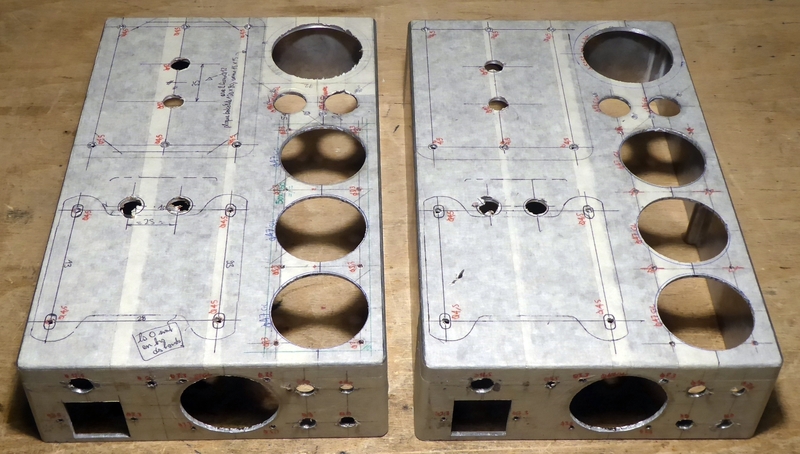
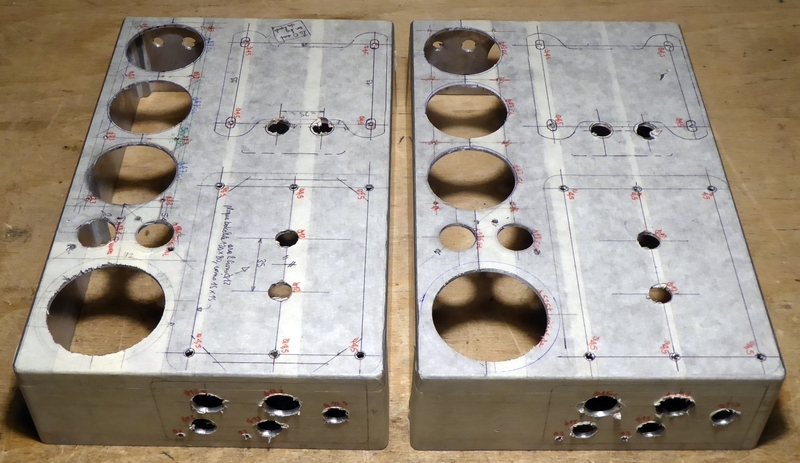
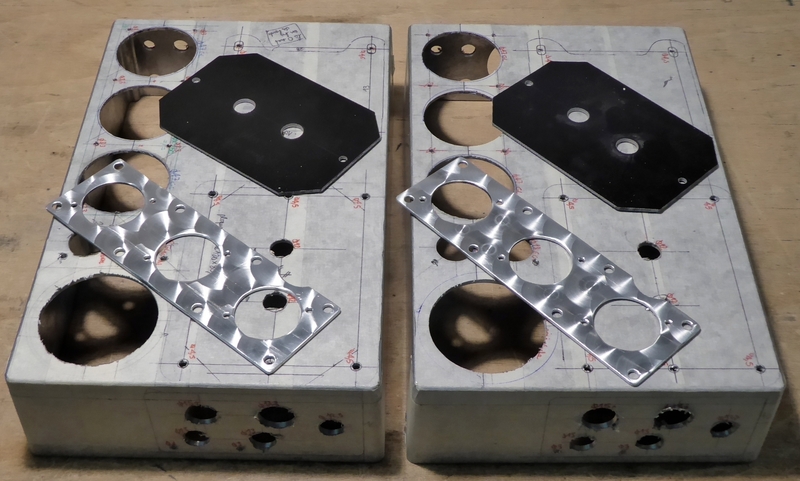
A+!



A+!
Lab-Retro-Cool look : Engine turning (Bouchonnage in French) of the chassis, before drilling :



Wait and See... 😀
A+!
In the USA, this is also known as "jeweliing".
Yours is a very fine example of it.
Ah, OK - Thanks @TheGimp ! 🙂
Originally, I did not know the English term for this kind of work...
In French, we call it Bouchonnage.
I found on the web that the matching English term was Engine Turning.
And I learn from you that there's another (US) appellation : Jewelling.
😉
A+!
Originally, I did not know the English term for this kind of work...
In French, we call it Bouchonnage.
I found on the web that the matching English term was Engine Turning.
And I learn from you that there's another (US) appellation : Jewelling.
😉
A+!
- Home
- Amplifiers
- Tubes / Valves
- The ultimate OTL6080
